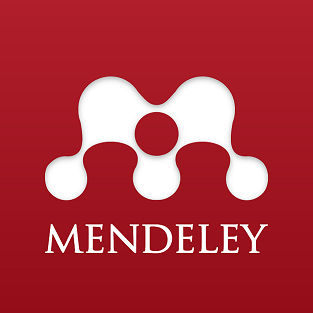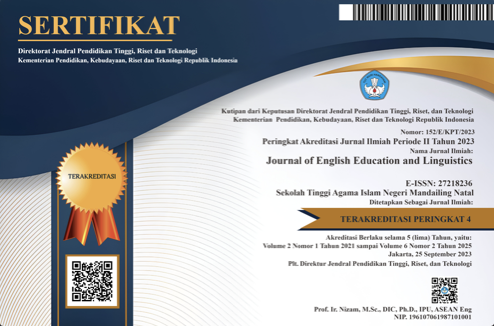PROBLEMS AND DIFFICULTIES OF SPEAKING AT MUHAMMADIYAH LAMPUNG UNIVERSITY STUDENTS IN COVID PANDEMIC
DOI:
https://doi.org/10.56874/jeel.v2i1.404Keywords:
Speaking, Speaking problems and difficulties, speaking performanceAbstract
The purpose of this research was to describe the problem and difficulties of speaking at Muhammadiyah Lampung University students in Covid pandemic. This research used descriptive qualitative research. The subject of this research were Muhammadiyah Lampung University students at first semester in English Education Department. The data collecting technique of this research used questionnaire. The result of this research indicated that the students in first semester of English Department have some problems and difficulties in speaking subject during Covid pandemic. There some problems and difficulties in practicing speaking in Covid pandemic namely 1) understanding the conversation; (2) less of vocabularies; (3) pronunciation; (4) shy, (5) Worrying for making grammatical errors, (6) lack of Technology, and (7) lack of motivation. Based on the analysis of questionnaire indicated that that 5 % in meaning, 22 % in vocabularies, 8 % in pronunciation, 32 % in shy, 8% Worrying for making grammatical errors, 10% lack of Technology, and 15% lack of motivation. Based on the data the majority students indicated that confidence is the most problem in speaking skill.
References
Abadi, Citra Priski. Developing Speaking Skill in EFL English Course. Available online at Journal on English as a Foreign Language, Volume 5, Number 2, September 2015
Akkakoson, S. (2016). Speaking Anxiety In English Conversation Classroom among Thai Students. Malaysian Journal of Learning and Instruction. (13), 63-82.
Amalia, Dinda and Husna, Nida. INTROVERT LEARNERS’ NEED ANALYSIS OF ENGLISH-SPEAKING ACTIVITY. Available online at IJEE (Indonesian Journal of English Education), 6 (2), 2019
Boonkita, Kamonpan. Enhancing the development of speaking skills for non-native speakers of English. Available at www.sciencedirect.com Procedia Social and Behavioral Sciences 2 (2010) 1305–1309
Brown, H. Douglas. 2001. Language Assessment “Principles and Classroom Practices”. New York: Addison Wesley Longman, Inc
Burns, Anne. Concepts for Teaching Speaking in the English Language Classroom. Available online at LEARN Journal: Language Education and Acquisition Research Network Journal, (12) .1,
Derakhshan, Ali; Khalili, Atefeh Nadi; and Beheshti, Fatima. Developing EFL Learner’s Speaking Ability, Accuracy and Fluency. Available online at http://dx.doi.org/10.5539/ells.v6n2p177 English Language and Literature Studies; Vol. 6, No. 2; 2016
Gilbert, J. B. (2008). Teaching pronunciation using the prosody pyramid (1st ed.). New York: Cambridge University Press.
Harmer, J. (2001). The Practice of Language Teaching. Essex: Longman Press
Hiebert, E. H., & Kamil, M. L. (2005). Teaching and Learning Vocabulary. Bringing Research to Practice. Lawrence Erlbaum Associates Publishers
Downloads
Published
Issue
Section
License
All articles published in the Journal of English Education and Linguistics are licensed under a Creative Commons Attribution-ShareAlike 4.0 International (CC BY-SA) license. This means anyone is free to copy, transform, or redistribute articles for any lawful purpose in any medium, provided they give appropriate attribution to the original author(s) and Journal of English Education and Linguistics, link to the license, indicate if changes were made, and redistribute any derivative work under the same license.
Copyright on articles is retained by the respective author(s) without restrictions. A non-exclusive license is granted to the Journal of English Education and Linguistics to publish the article and identify itself as its original publisher, along with the commercial right to include the article in a hardcopy issue for sale to libraries and individuals.
Although the conditions of the Creative Commons Attribution-ShareAlike 4.0 International (CC BY-SA) license do not apply to authors (as the copyright holder of your article, you have no restrictions on your rights), by submitting to the Journal of English Education and Linguistics, authors recognize the rights of readers and must grant any third party the right to use their articles to the extent provided by the license.

This work is licensed under a Creative Commons Attribution-ShareAlike 4.0 International License.








